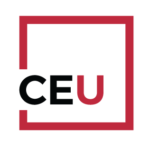Website design is a variable that changes as fast, if not faster than we can get our latest creation published!
In just the past twelve months, digital adoption has expanded five to ten times faster than was expected, thanks to the pandemic and lockdowns. This, together with the increased economic uncertainty and loss of predictability, has driven customers online in ever greater numbers.
This migration has further shifted the balance of power to the customer, who now has far more control of their relationship with brands. As if this weren’t challenging enough for marketing, customers have also become less loyal and more open to new experiences.
That’s why it’s important for a brand to always be improving their online presence. Not the “rearranging the deckchairs on the Titanic” type of superficial updates, but changes that make the experience better for current and potential customers. What are they? Read on to find out.
What Google wants
What Google wants, Google gets. Since it launched its core web vitals last year, some websites have dramatically increased their search result rankings (Like C3Centricity did!), while others have disappeared off the front page, and the following pages too!
Google announced the introduction of Core Web Vitals last year as a set of metrics related to speed, responsiveness and visual stability, the three most important ones for a good customer experience. These are:
- Largest Contentful Paint: This is the time it takes for a page’s main content to load. An ideal LCP measurement is 2.5 seconds or faster.
- First Input Delay: The time it takes for a page to become interactive. An ideal measurement is less than 100 ms.
- Cumulative Layout Shift: The amount of unexpected layout shift of visual page content. An ideal measurement is less than 0.1.
Google said it would give six months notice before introducing these metrics, to give everyone time to adapt and improve their websites. I haven’t yet seen an announcement but I have seen changes in my rankings (for the better) so I am wondering if they have in fact already been introduced. Do you know if they have?
Taking the perspective of the customer
One of the most frequent reasons why websites fail is because the creator has not taken the perspective of the visitor.
The content has been designed by an organisation with the objective of distributing information that it wants to share with its current and potential customers. Not what they believe their customers might need or desire. And even less the differences between the needs of current and potential customers. Even when the customer is considered, it usually comes as an afterthought, often as a review the day before its launch!
Customer-centric web designs use customer input all along their development, not as a late-stage verification that customers can use it, which is what many companies measure. (if at all!) There are so many opportunities to see how customers are using our websites that there is no excuse for … Click to continue reading















